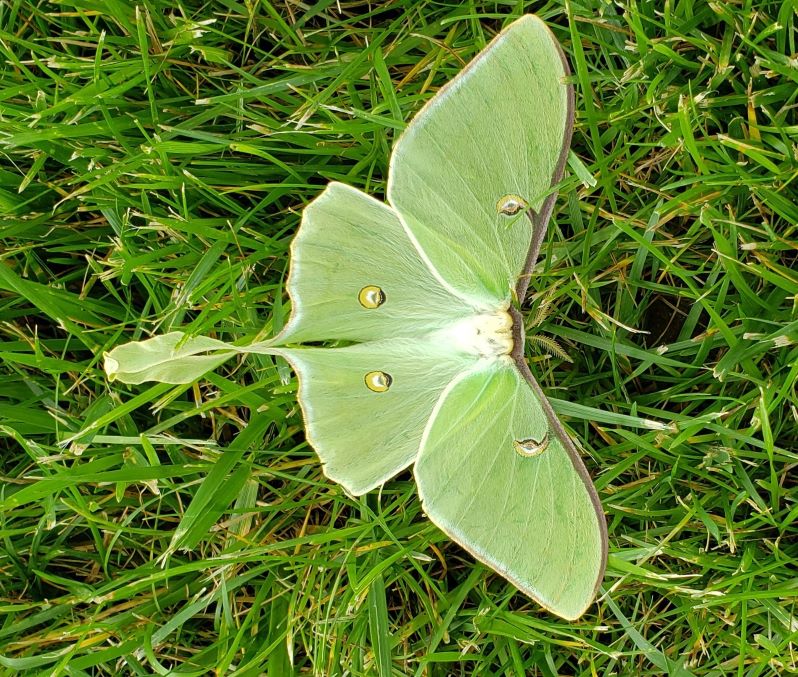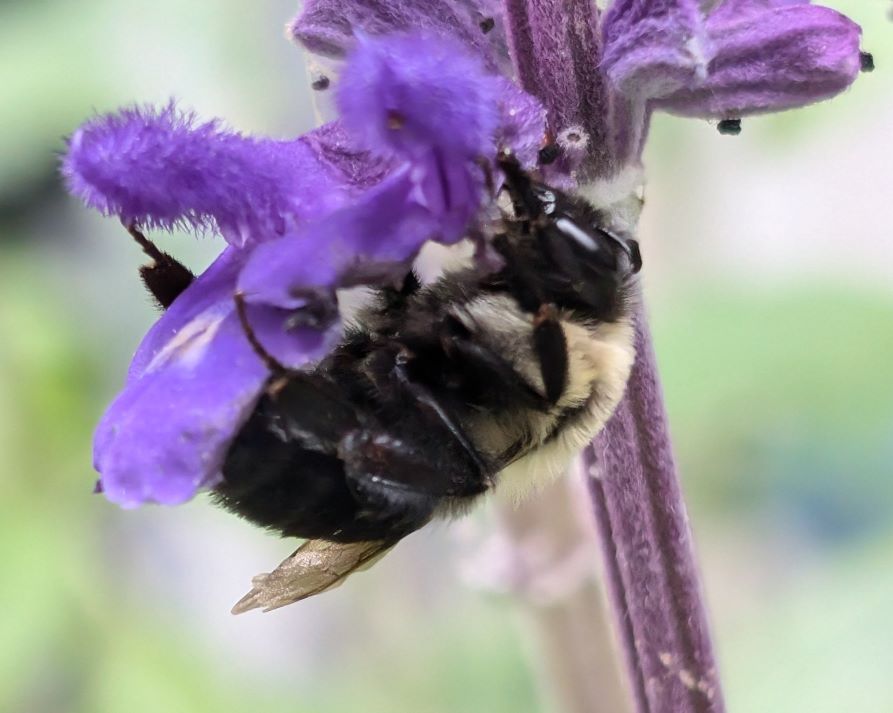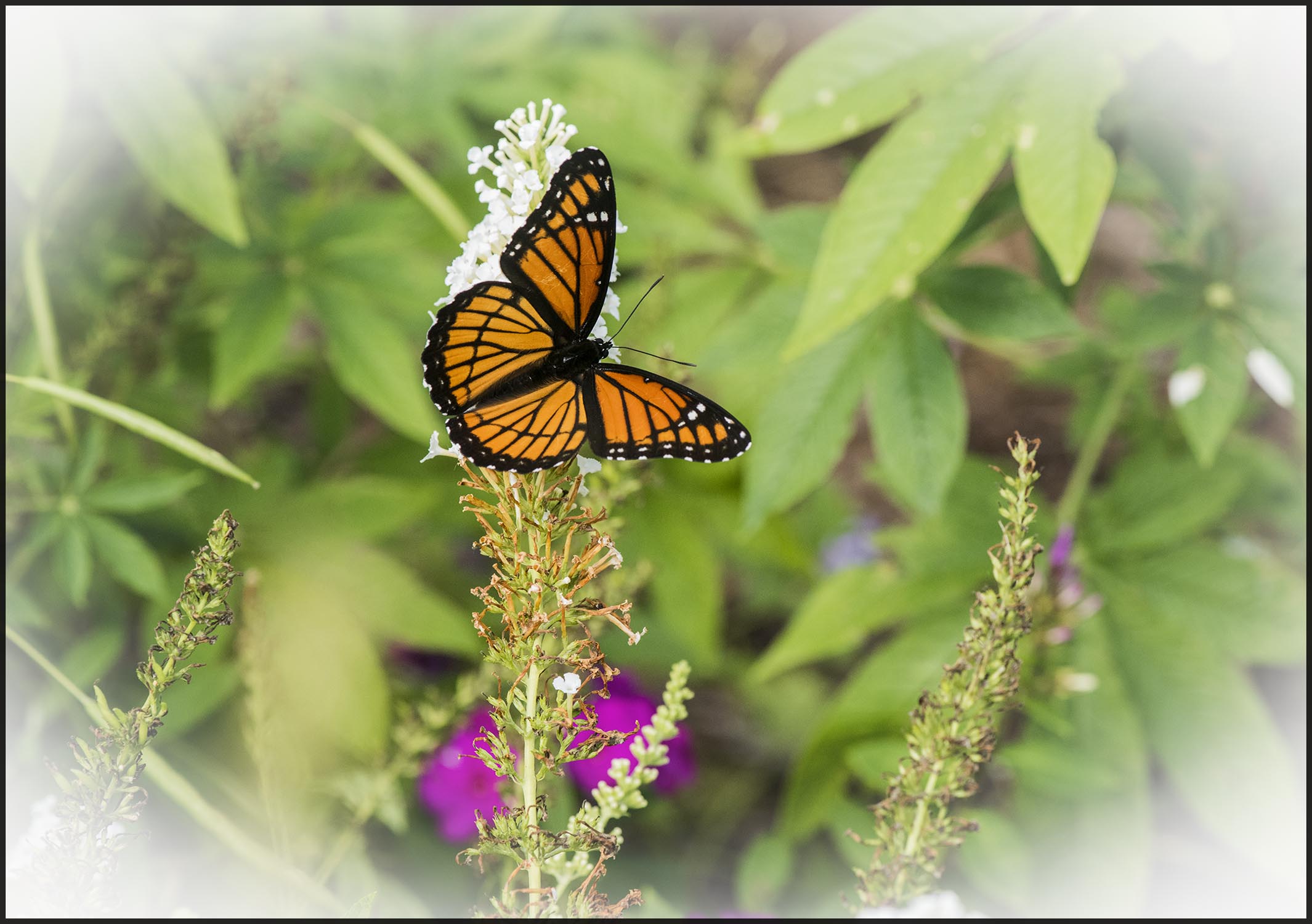 Time to Re-Think Leaf Cleanup
Time to Re-Think Leaf Cleanup
When we look outside this time of year, we are greeted with one of the most delightful displays of nature's beauty. I am, of course, talking about the beautiful leaf color that many of our landscape trees have in autumn. It is great seeing all the different colors for the few short weeks that it lasts here in the metro area. However, this article's focus is on the fun that happens next: the falling of the leaves.
In the KC Metro, leaf cleanup is considered an essential garden task, especially if your street is lined with oak trees or maples on both sides of the road. In some communities around Johnson County, leaf cleanup can be a neighborhood event where people help each other clear their grass, driveways, and sidewalks of plant debris. Although having a clean and tidy yard is important to many people, it can hurt our most vulnerable pollinators.
Let's start with the bees. Are you aware that the American Bumble Bee  opulations have declined massively in the past 25 years? That was a trick question; there isn't one American Bumble Bee. The U.S. Forest Service says there are 49 different species of bumble bees native to the States. These social bees form colonies in underground holes left by rodents or other small mammals. The queen of these colonies is the lone survivor of the group in the wintertime, and guess where they hibernate? That's right, under the leaves you are eager to rake up. More specifically, they dig right under the leaf litter in little tunnels. By removing the leaves in the fall, there is less and less area where they can hibernate.
opulations have declined massively in the past 25 years? That was a trick question; there isn't one American Bumble Bee. The U.S. Forest Service says there are 49 different species of bumble bees native to the States. These social bees form colonies in underground holes left by rodents or other small mammals. The queen of these colonies is the lone survivor of the group in the wintertime, and guess where they hibernate? That's right, under the leaves you are eager to rake up. More specifically, they dig right under the leaf litter in little tunnels. By removing the leaves in the fall, there is less and less area where they can hibernate.
Have you ever been outside on a cool morning and seen a Luna moth (Actias luna)? What about a Viceroy butterfly (Limenitis archippus) visiting your milkweeds that you might have mistaken for a Monarch (Danaus plexippus)? These butterflies and many  others found in the Great Plains need leaf litter over winter. Eggs, chrysalis, and cocoons may be on the leaves in your yard. Raking them up and putting them in a plastic bag ensures their demise. Mowing over them to create a thatch layer in your grass is also detrimental to the life cycle of these objectively beautiful insects.
others found in the Great Plains need leaf litter over winter. Eggs, chrysalis, and cocoons may be on the leaves in your yard. Raking them up and putting them in a plastic bag ensures their demise. Mowing over them to create a thatch layer in your grass is also detrimental to the life cycle of these objectively beautiful insects.
Leaf litter can't be mentioned without bringing up a fan favorite you might have fond memories of as a child. Fireflies! That's right, fireflies (Lampyridae family) also overwinter in the soil underneath the leaves as larvae. There are around 200 species in the U.S., and just like bumble bees, removing those decomposable leaves also removes their potential habitat.
So, if mowing the leaves is bad, raking them into bags, and hauling them away is bad, what are you supposed to do to make your lawn look good? There are a handful of ideas that you can incorporate into this fall gardening task, such as cleaning up your yard and providing habitat. First, you can rake them into a neat tree ring around the trees from which they fell. This provides an area of habitat for the insects and benefits the tree by acting as a mulch layer to protect the tree from winter dry spells. Secondly, make a catch-all for all your landscape droppings near a not-so-visible garden area. This can be sticks, logs, grass clippings, and of course, leaves. This technique alone can provide habitat to many different species of insects that we treasure in our gardens.
The decline in native insect populations is a direct result of human activity. By absorbing the knowledge shared in this article, you are now equipped to make a positive change. The responsibility to reverse this trend lies with each of us. It's time for us all to step up and make a difference.
Markis HIll, Horticulture Turf and Ornamentals Agent, 2024
Want more seasonal lawn and garden tips?
Sign up for Knowledge for Life , our monthly newsletter. You'll receive articles from our Horticulture agents, plus information about cooking, nature, health, upcoming events, and more.
Have questions?
The Garden Hotline is staffed by trained EMG volunteers and Extension staff who will assist you with questions.
Phone: (913) 715-7050
Email: garden.help@jocogov.org